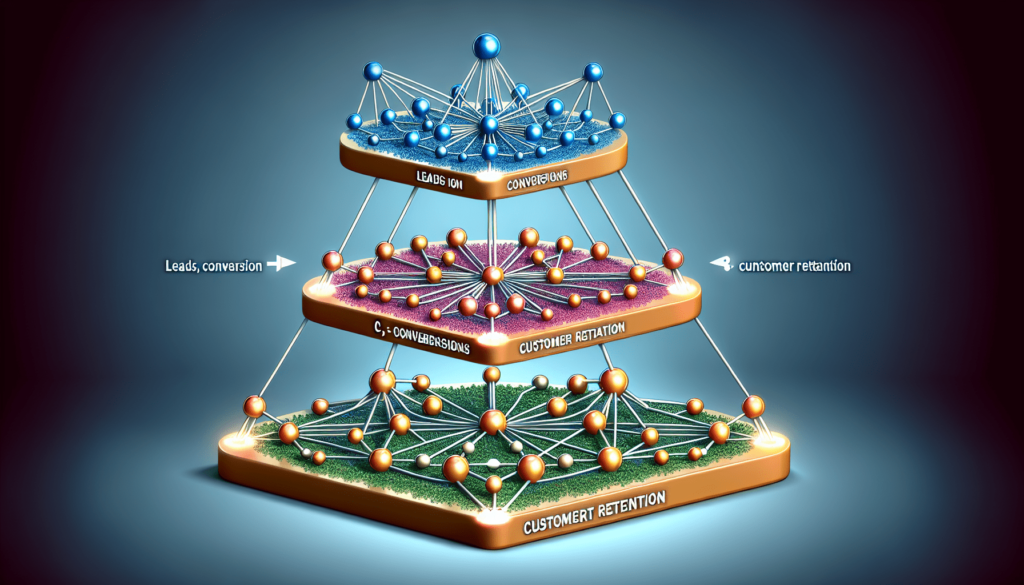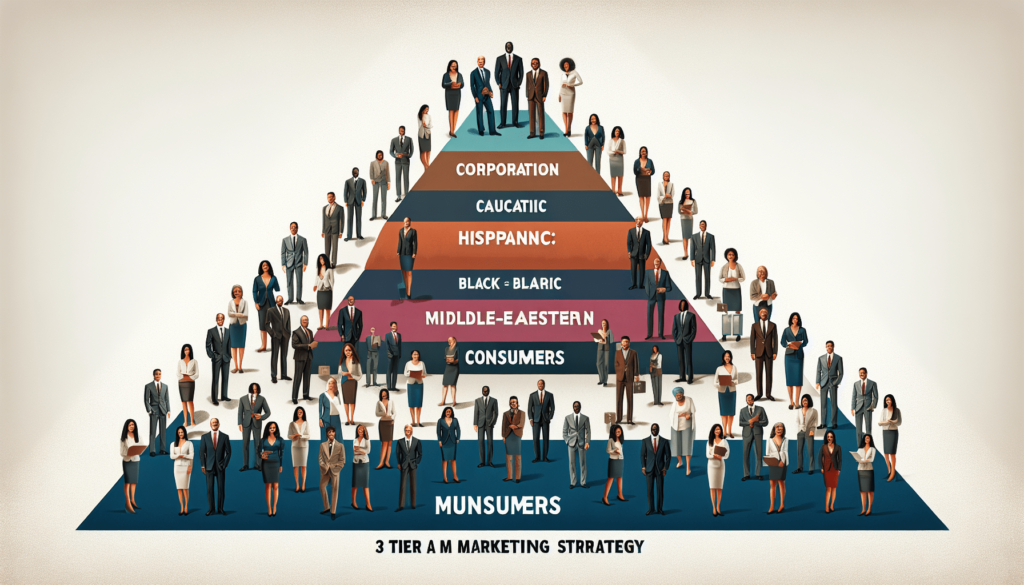Have you ever wondered what exactly is a 3 level marketing strategy? Well, let’s break it down for you. In simple terms, a 3 level marketing strategy is a business model that relies on not only selling products or services, but also recruiting other individuals to do the same. It operates on the concept of building a network of distributors or salespeople who earn commissions not only from their own sales, but also from the sales made by the people they have recruited. This strategy is often referred to as multi-level marketing (MLM) and has gained significant popularity in recent years. So, if you’re curious to learn more about this fascinating concept and how it works, continue reading!
Definition of 3 Level Marketing Strategy
Explanation of Multi-Level Marketing (MLM)
Multi-Level Marketing, also known as MLM, is a marketing strategy that relies on a network of independent distributors or representatives to sell products or services directly to consumers. It operates on a multi-level structure, where distributors earn commissions not only from their own sales but also from the sales made by their recruited down-line distributors. This creates a hierarchical organization with different levels or tiers.
Overview of the 3 Level Marketing Strategy
The 3 Level Marketing Strategy is a specific type of MLM strategy that focuses on building a three-tiered structure within the organization. This structure consists of three levels: the up-line, the down-line, and the sideline.
How it differs from other MLM strategies
What sets the 3 Level Marketing Strategy apart from other MLM strategies is its emphasis on building and managing a down-line of distributors across three tiers. While other MLM strategies may have additional levels or variations in their structure, the 3 Level Marketing Strategy provides a clear framework for recruitment, training, and compensation within these three levels.
Structure of 3 Level Marketing Strategy
Three Levels: Up-line, Down-line, and Sideline
The up-line refers to the distributor who directly recruits and supports those in the down-line. They act as mentors and leaders to guide and motivate their down-line distributors. The down-line consists of the distributors recruited by the up-line, forming multiple tiers or levels beneath. The sideline refers to the distributors who are indirectly related to the up-line but are part of the same organization.
Roles and Responsibilities of each level
The up-line’s primary role is to recruit, train, and support their down-line distributors. They are responsible for providing guidance, motivating their team, and helping them achieve their sales goals. Down-line distributors are responsible for selling the products or services and recruiting new distributors into their own down-line. Sideline distributors may have a less direct relationship with the up-line, but they still contribute to the overall success of the organization.
Commission and Compensation Structure
In the 3 Level Marketing Strategy, distributors earn commissions not only from their personal sales but also from the sales made by their down-line distributors. The exact commission structure can vary between different MLM companies, but it typically involves a percentage of the sales made by the down-line. This structure incentivizes distributors to both sell products or services themselves and build a successful down-line to maximize their earnings.

Recruitment Process
Finding Potential Distributors
Finding potential distributors is a crucial part of the recruitment process in the 3 Level Marketing Strategy. Distributors can find potential recruits through various methods such as personal networks, social media, online platforms, and attending networking events. It is essential to identify individuals who are motivated, have an entrepreneurial spirit, and are willing to put in the effort required for success in the MLM business.
Qualifying Criteria for Recruitment
When recruiting new distributors into the 3 Level Marketing Strategy, it’s important to establish qualifying criteria to ensure that the individuals joining the organization are a good fit. These criteria may include factors such as personal integrity, willingness to learn and adapt, sales skills, and the ability to work independently. By setting clear criteria, the organization can maintain its standards and build a strong and committed team.
Training and Support for New Distributors
To set new distributors up for success, it is crucial to provide them with comprehensive training and ongoing support. This can include product knowledge training, sales techniques, effective networking strategies, and guidance on building and managing their down-line. Ongoing support through regular meetings, webinars, and individual coaching can help new distributors overcome challenges and gradually develop the skills and confidence needed to thrive in the MLM industry.
Product or Service Offerings
Types of Products/Services commonly offered
The product or service offerings in the 3 Level Marketing Strategy can vary greatly depending on the MLM company. They can range from health and wellness products, skincare and beauty products, household items, nutrition supplements, and many others. It is important for distributors to choose products or services that they are passionate about and believe in, as this enthusiasm can greatly impact their ability to effectively market and sell the offerings.
Quality and Pricing of the Products/Services
One of the key factors that determine the success of any MLM strategy is the quality and pricing of the products or services being offered. It is important for MLM companies to ensure that their offerings are of high quality, meeting or exceeding customer expectations. Additionally, the pricing should be fair and competitive to attract both distributors and customers. By offering products or services that provide value for money, MLM companies can enhance the overall appeal of their offerings.
Differentiating factors from competitors
In a highly competitive market, it is essential for MLM companies utilizing the 3 Level Marketing Strategy to have unique differentiating factors that set them apart from their competitors. This can include aspects such as exclusive product formulations, innovative marketing strategies, exceptional customer service, or a strong company mission and values. By highlighting these differentiating factors, distributors can position themselves and their offerings as the preferred choice among consumers.

Building and Managing a Down-line
Effective Communication and Relationship Building
Building and managing a down-line requires effective communication and relationship building skills. The up-line should prioritize regular communication with their down-line distributors, providing updates, guidance, and support. By fostering strong relationships, distributors can create a sense of community and support, which leads to increased motivation and greater overall success within the organization.
Motivating and Mentoring Down-line
Motivation plays a crucial role in the success of down-line distributors. The up-line should take on the role of a mentor, motivating and guiding their down-line to achieve their goals. This can be done through recognition programs, incentives, goal-setting exercises, and providing ongoing training and personal development opportunities. By investing in the success of their down-line, distributors can create a positive and motivating environment that fosters growth and achievement.
Strategies for Retaining and Expanding Down-line
Retaining and expanding the down-line is important for sustaining and growing a successful 3 Level Marketing Strategy. Strategies for retention may include recognizing and rewarding top performers, conducting regular training and team-building events, creating a supportive and positive culture within the organization, and offering ongoing opportunities for personal and professional growth. Additionally, effective recruitment strategies can help expand the down-line by continuously bringing new, motivated individuals into the organization.
Earning Potential
Understanding the Compensation Plan
To fully comprehend the earning potential in the 3 Level Marketing Strategy, distributors must have a clear understanding of the compensation plan. Compensation plans can vary widely among MLM companies, but most incorporate a combination of commissions from personal sales, down-line sales, and bonuses for achieving specific milestones or targets. Understanding the different components and requirements of the compensation plan can help distributors set realistic goals and maximize their earning potential.
Factors Influencing Earning Potential
The earning potential in the 3 Level Marketing Strategy is influenced by several factors. These include the size and productivity of the down-line, the sales volume generated by the entire organization, the commission structure, the pricing and demand for the products or services, the distributor’s sales and leadership capabilities, and the overall market conditions. It’s important for distributors to focus on building and expanding their down-line, as this can significantly impact their earning potential.
Realistic Expectations and Time Commitment
While the 3 Level Marketing Strategy can offer significant earning potential, it is essential for distributors to have realistic expectations and understand the time commitment required. Building a successful down-line and achieving significant income often takes time, effort, and consistent dedication. It may take months or even years to see substantial results. Distributors must be prepared to invest their time and energy into the business to reap the rewards.

Benefits and Drawbacks of 3 Level Marketing Strategy
Advantages of the Strategy
The 3 Level Marketing Strategy offers several advantages. It provides individuals with an opportunity to start their own business with a relatively low initial investment. Distributors can work at their own pace, enjoy flexible working hours, and have the potential to earn passive income through their down-line’s sales. The strategy also promotes personal growth, networking skills, and the ability to build strong relationships within a supportive community.
Challenges and Limitations
Like any business model, the 3 Level Marketing Strategy also has its challenges and limitations. It requires dedication, persistence, and a willingness to face rejection. As distributors rely on their down-line for a significant portion of their income, they may experience fluctuations in earnings due to factors beyond their control. Some individuals may find it challenging to recruit and build a successful down-line, which can impact their overall success in the MLM industry.
Legal and Ethical Considerations
Operating within the 3 Level Marketing Strategy requires adherence to legal and ethical considerations. Distributors must ensure that they comply with all applicable laws and regulations, including those related to advertising, product claims, and income representations. MLM companies should also have well-defined policies and procedures in place to prevent unethical practices such as pyramid schemes. A commitment to honesty, transparency, and integrity is essential to build trust among distributors and customers.
Success Stories and Case Studies
Examples of Successful Distributors
The 3 Level Marketing Strategy has witnessed numerous success stories where distributors have achieved significant financial success and personal growth. Individuals such as Mary Kay Ash, the founder of Mary Kay Cosmetics, and Rich DeVos and Jay Van Andel, the co-founders of Amway, have become household names in the MLM industry. Their stories serve as inspiration, showcasing the potential for success within the 3 Level Marketing Strategy.
Case Studies highlighting Strategies
Case studies can provide valuable insights into the strategies that have been successful within the 3 Level Marketing Strategy. Analyzing specific cases can help distributors understand how to effectively recruit, train, and motivate their down-line, as well as identify potential pitfalls to avoid. Examining the strategies employed by successful distributors can provide valuable lessons and guidance for those looking to achieve their own success in the MLM industry.
Lessons learned from Failures
Failure is also a part of the MLM industry, and learning from these failures is essential to avoid repeating the same mistakes. Case studies of failed businesses within the 3 Level Marketing Strategy can shed light on the factors that contributed to their downfall. Understanding the mistakes, missteps, or shortcomings of unsuccessful distributors can help others course-correct and implement strategies that increase their chances of success.

Comparison with Traditional Business Models
Different Approaches to Market Expansion
The 3 Level Marketing Strategy offers a different approach to market expansion compared to traditional business models. Instead of relying solely on the efforts of a company’s internal sales team, it leverages the power of a network of independent distributors who often have personal connections and are passionate about the products or services being offered. This model allows for a broader reach and more personalized approach to marketing and sales.
Investment and Risk Comparison
One of the advantages of the 3 Level Marketing Strategy is the relatively low initial investment required to start a business compared to traditional business models. In traditional models, entrepreneurs often have to invest significant capital in product development, manufacturing, inventory, and marketing. MLM distributors, on the other hand, can typically start with a small investment in a starter kit and focus primarily on sales and recruitment. However, it’s important to note that there are still risks associated with any business venture, including the MLM industry.
Long-term Viability and Sustainability
The long-term viability and sustainability of the 3 Level Marketing Strategy can vary depending on various factors. MLM companies that offer high-quality products or services at competitive prices, maintain strong ethical practices, and adapt to changing market dynamics have a better chance of long-term success. However, it is important to note that the MLM industry has faced criticism and scrutiny over the years, with some jurisdictions considering certain MLM practices as illegal pyramid schemes. Staying knowledgeable about legal and regulatory requirements and constantly adapting to market trends are crucial for long-term viability.
Conclusion
Summary of 3 Level Marketing Strategy
The 3 Level Marketing Strategy is a unique approach within the MLM industry that focuses on building and managing a three-tiered structure. It involves recruitment, training, and support of distributors across different levels to earn commissions from personal sales as well as the sales generated by their down-line.
Considerations for Potential Participants
For individuals considering participating in the 3 Level Marketing Strategy, it is important to carefully evaluate the products or services being offered, the compensation plan, and the company’s reputation and track record. Being realistic about the time and effort required, as well as having a passion for the products or services, can greatly enhance the chances of success.
Future Trends and Outlook
As the MLM industry continues to evolve, there are several key trends that may shape the future of the 3 Level Marketing Strategy. These include an increased focus on digital marketing and e-commerce, the rise of social selling and influencer marketing, and the integration of technology to enhance distributor training and support. Staying abreast of these trends and embracing innovation will be crucial for MLM companies and distributors to stay competitive and thrive in the dynamic marketplace.
In conclusion, the 3 Level Marketing Strategy offers a unique opportunity for individuals to start their own business and potentially achieve financial success. However, it is important to approach this strategy with realistic expectations, dedication, and a strong understanding of the products or services being offered. With the right mindset and a commitment to ethical practices, the 3 Level Marketing Strategy can provide a platform for personal growth, community building, and entrepreneurial success.












